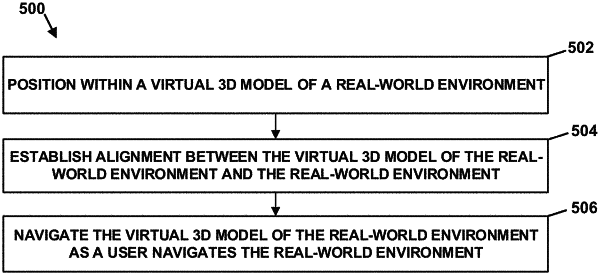| CPC G06T 19/006 (2013.01) [G06F 3/04815 (2013.01); G06F 3/04845 (2013.01); G06F 3/167 (2013.01)] | 20 Claims |

|
1. A computing device comprising:
one or more sensors;
a user input interface;
a display screen;
at least one processor;
a non-transitory computer-readable medium; and
program instructions stored on the non-transitory computer-readable medium that are executable by the at least one processor such that the computing device is configured to:
based on user input, determine an initial position and orientation of the computing device within a virtual three-dimensional (3D) model of a real-world environment;
capture, via the one or more sensors, sensor data that is representative of the real-world environment surrounding the computing device;
based on an analysis of the captured sensor data, detect at least one object in the real-world environment surrounding the computing device;
compare the at least one detected object to data defining physical elements that are represented within the virtual 3D model;
based on the comparison, identify a given physical element represented within the virtual 3D model that matches the detected object;
update one or more of a position, an orientation, or a presentation of the virtual 3D model of the real-world environment in order to align the given physical element represented within the virtual 3D model with the detected object in the real-world environment surrounding the computing device; and
cause the display screen to present the aligned virtual 3D model as overlaid virtual content on a view of the real-world environment surrounding the computing device.
|